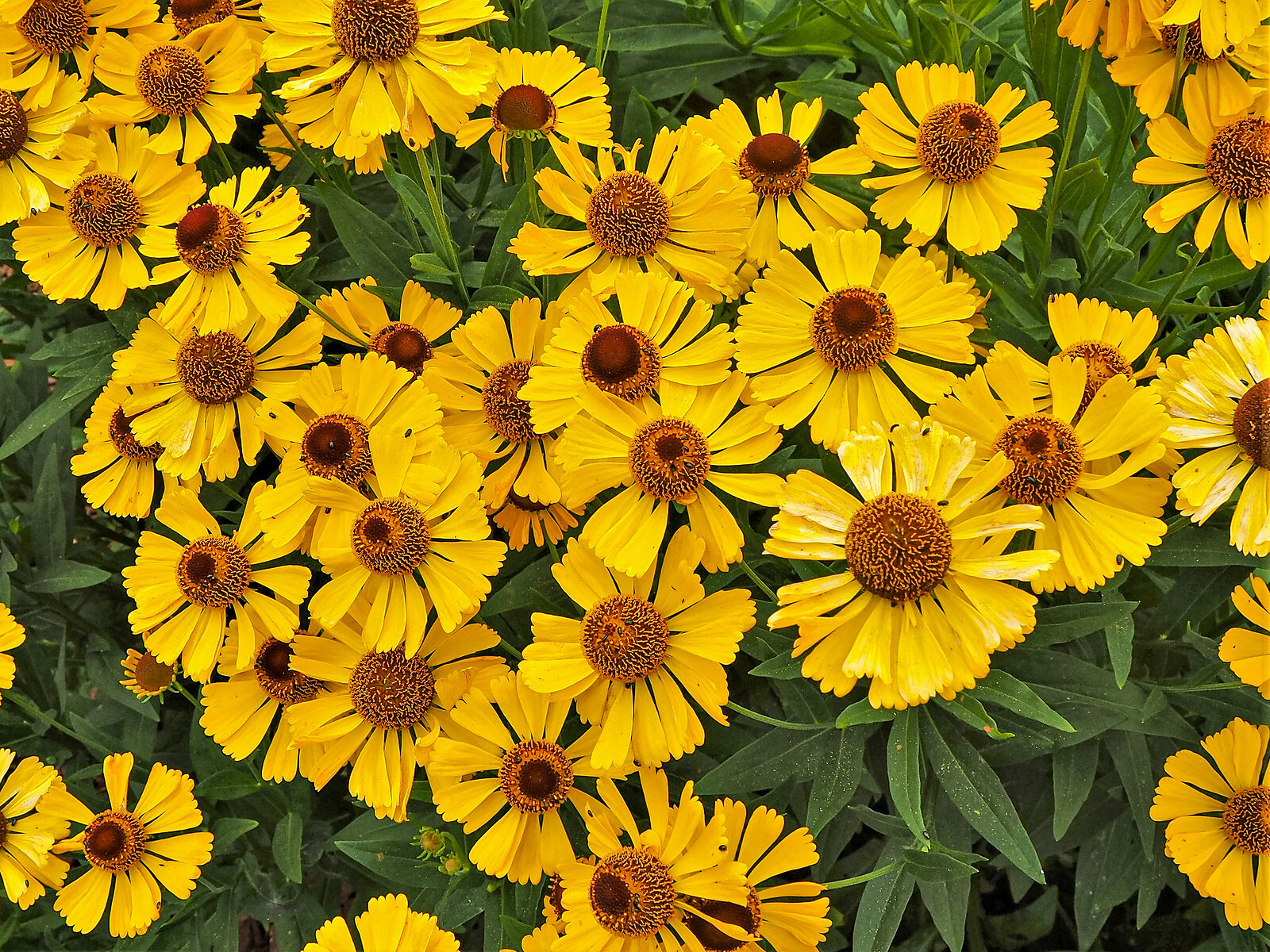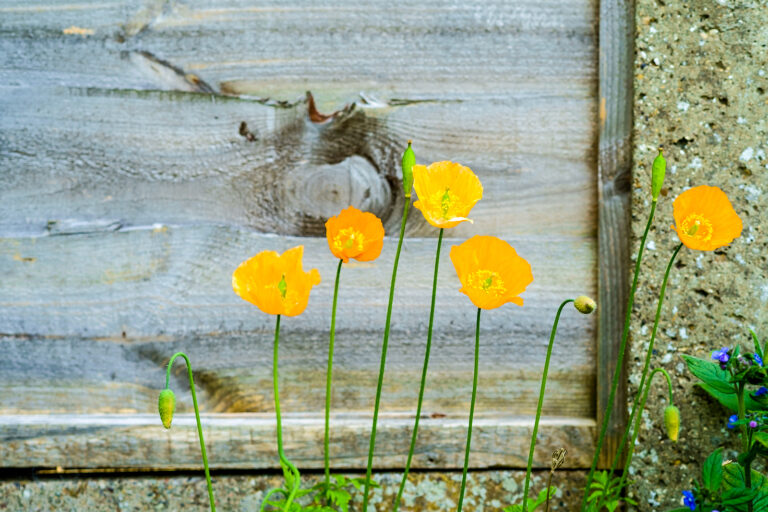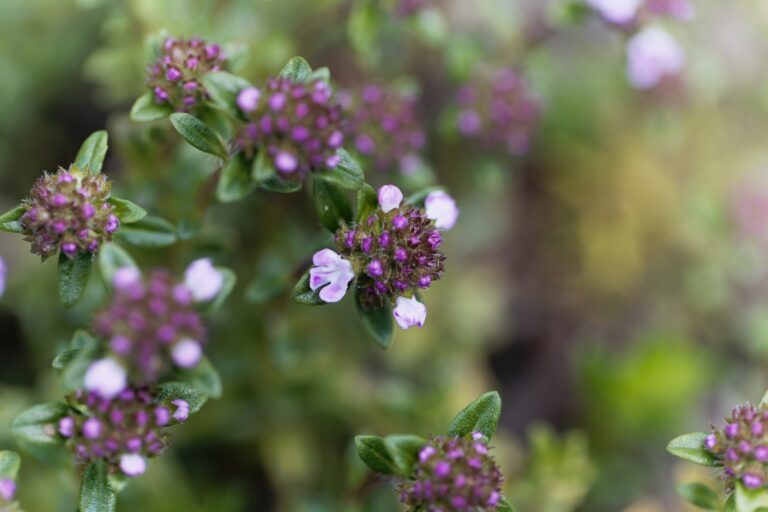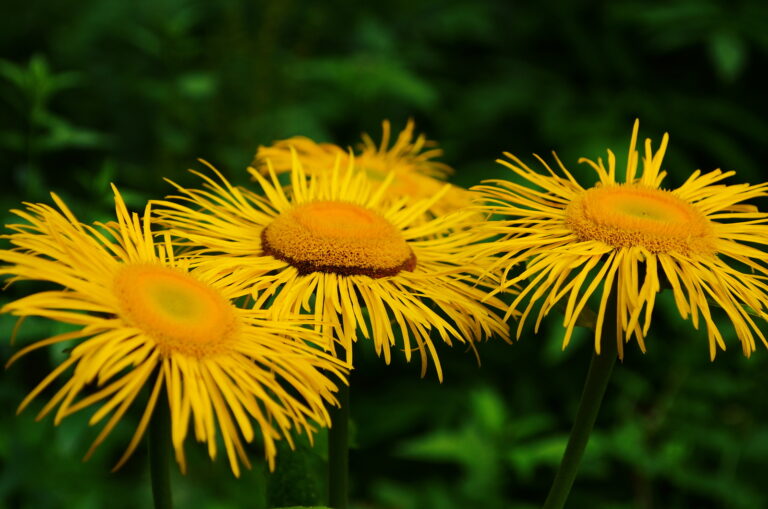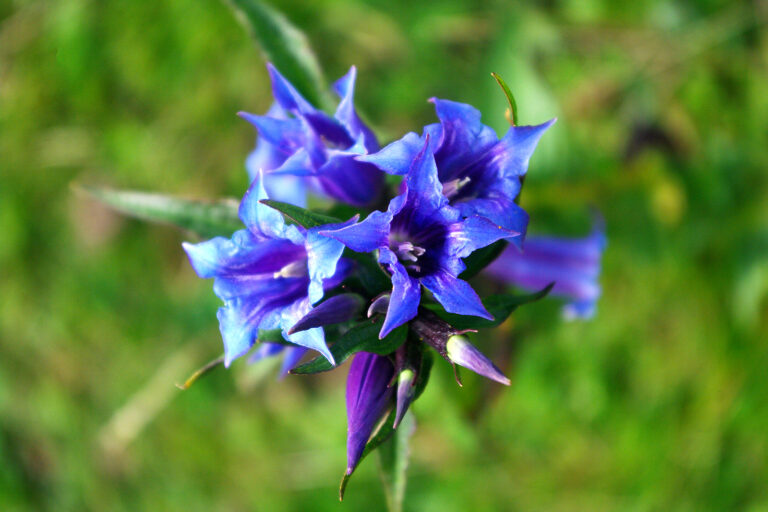How to Grow Sneezeweed — Helenium
Helenium–commonly called sneezeweed–is a genus of about 40 species of daisylike annuals, biennials, and perennials. There are numerous cultivars of the perennial Helenium that have been developed for gardens. Helenium were once–and in many places still are–wildflowers native to North America.
The perennials in the genus are prized for their daisylike flower heads that bloom in shades of yellow, orange, bronze and red. The flower heads consist or ray florets or petals that surround dense, buttonlike centers of disk florets.
Helenium grows upright with branched winged stems and lance-shaped leaves. They are clump-forming.
Sneezeweeds do not cause sneezing, but contact with the foliage can cause an allergic skin reactions. All parts of the plant are poisonous if eaten.
Helenium are native to damp meadows or woodland margins. They are a good choice for moist or damp gardens.
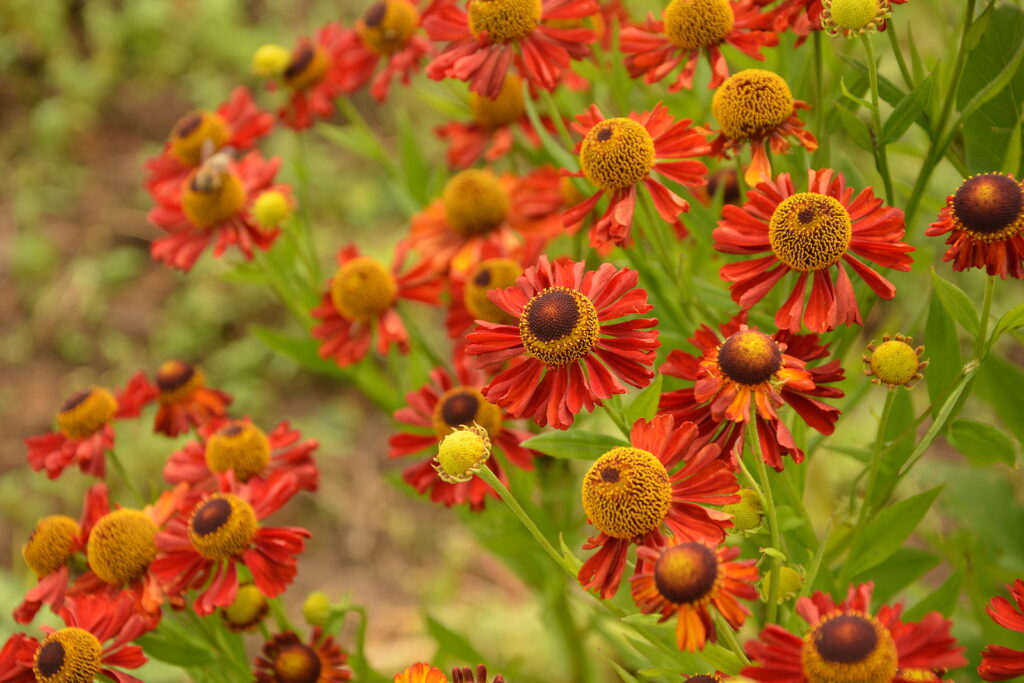
Get to know Helenium
- Plant type: Hardy annual or perennial
- Growing Zones and range: All zones as an annual; Zones 4 to 9 as a perennial
- Hardiness: Hardy to -35°F (-37°C); very hardy in cold and hot weather; tolerates drought once mature.
- Height and width: 3 to 5 feet (.9-1.5m) tall
- Foliage: Ovate to inversely lance-shaped, mid-green leaves to 8 inches long
- Flowers: Moundlike discs surrounded by fringed petals the shape of a slice of pie; flowering one per stem or in clusters; flowers are 2 inches (5cm) wide.
- Flower colors: Shades of yellow, gold, red, and burgundy
- Bloom time: Late summer through early fall
- Uses: Borders
- Garden companions: Combine with asters or ornamental grasses
- Common name: Sneezeweed, Helen’s flower, swamp sunflower
- Botanical name: Helenium autumnale
- Family: Compositae
- Origin: Woodland margins in North and Central America
Where to plant Helenium
- Grow Helenium in full sun.
- Plant Helenium in average, moist to wet soil.
- Helenium prefers a soil pH of 6 to 7.
Helenium uses and companions
- Plant Helenium in groups in the middle to back of beds and borders.
- Naturalize Helenium in moist meadow plantings.
- Good garden companions for Helenium include Aster, Chrysanthemum, Echinops, Erigeron, Helianthus, Hemerocallis, Solidago.
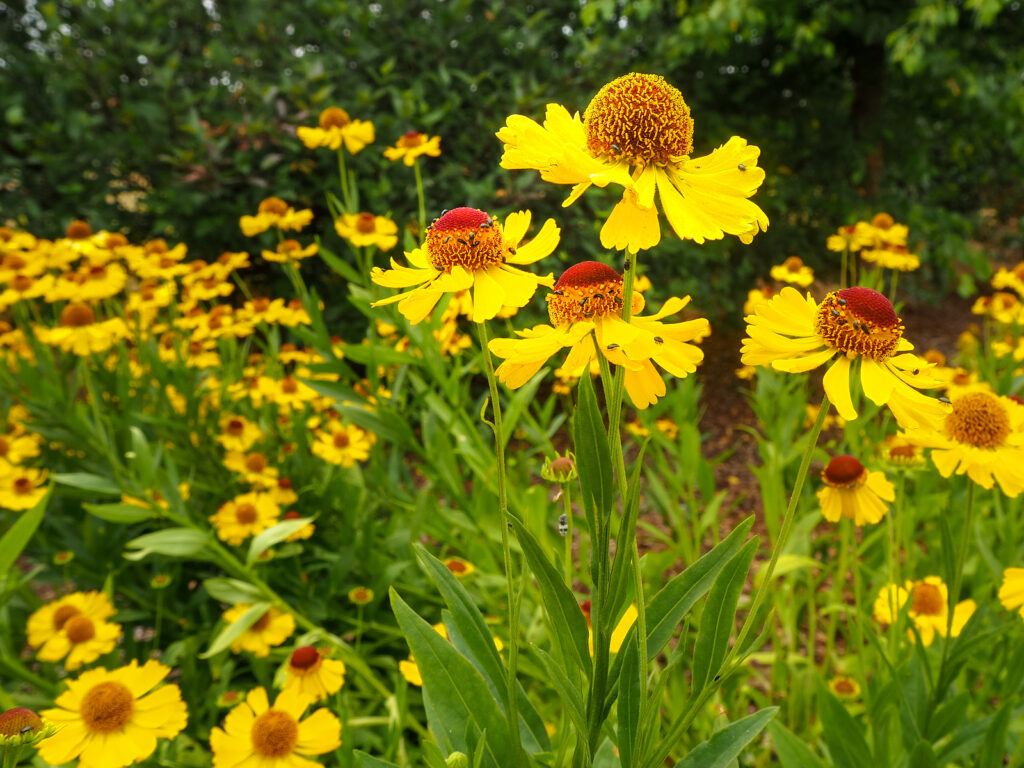
When to plant Helenium
- Set Helenium in the garden in spring.
- Start seeds indoors 4 to 6 weeks before the last frost in spring.
- Sow seeds outdoors in cold frames 2 weeks before the last frost, later in outdoor beds.
- Set container-grown Helenium in the garden in spring, summer, or fall.
Planting and spacing Helenium
- Sow seed 1/8 inch deep in flats or six-packs filled with seed-starting mix.
- Sow seed outdoors in finely prepared garden soil.
- Space Helenium 3 to 5 feet(.9-1.5m) apart.
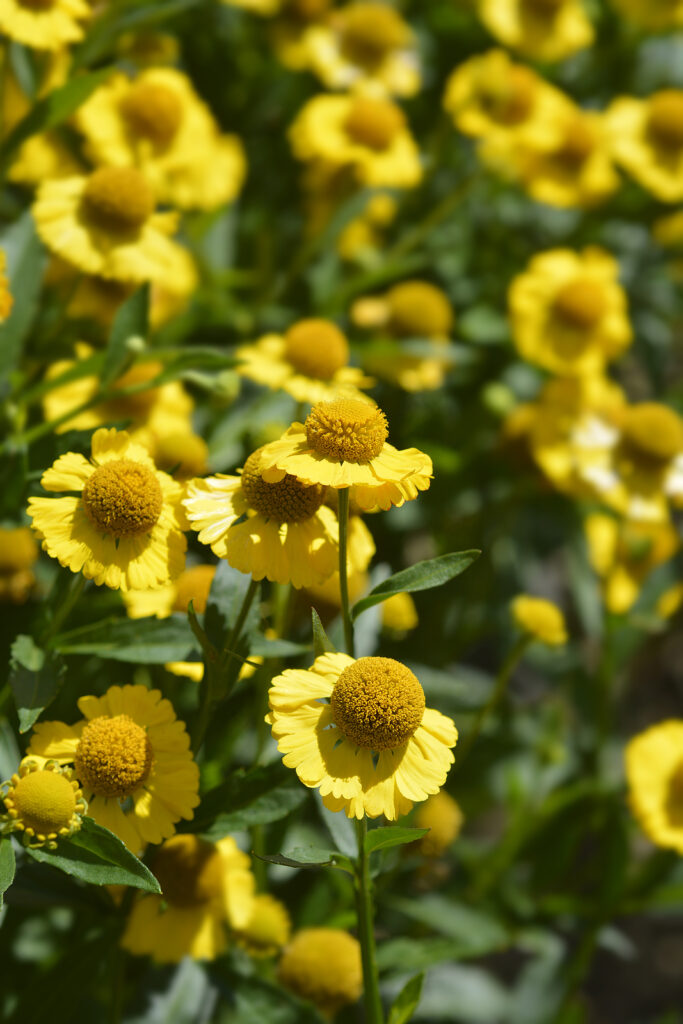
How to water and feed Helenium
- Keep Helenium evenly moist.
- Helenium needs only occasional feeding; avoid too much fertilizer or plants will flop over.
- Top-dress plants with aged compost in fall.
Helenium care
- Pinch Heleniumback by one-third in late spring for bushier growth.
- Stake tall plants as needed to keep them upright.
- Trim off spent blooms for the longest flowering.
- Divide Helenium every 2 to 3 years as needed.
- Helenium is susceptible to rust, powdery mildew, and leaf spot.

Helenium propagation
- Propagate Helenium by seed or division.
- Helenium seeds germinate in 10 to 21 days at 70°F (21°C).
- Divide perennial clumps in early spring if they are crowded. Clumps may need division every three years. Replant divisions immediately.
Helenium varieties to grow
- Helenium amarum, bitterweed. Annual grows to 24 inches (61cm) tall with many yellow, daisylike flowers.
- H. autumnale, common sneezeweed. Perennial grows 2 to 5 feet (.6-1.5m) tall forming 2 to 3 feet wide clumps; bears 2 to 3 inch (5-7.6cm) wide yellow flowers with brown centers and wedge-shaped petals that are toothed on the ends; cultivars are more often grown than the species. Cultivars include yellow-flowered ‘Butterpat’, bronze-red ‘Crimson Beauty’, coppery red ‘Moerheim Beauty’, yellow-brown ‘Zimbelstern’, bronze-red ‘Brilliant’, and yellow-flowered ‘Kugelsonne.’
- H. hoopesii, orange sneezeweed. Grows 24 to 36 inches (61-91cm) tall forming 24-inch (61cm) wide clumps; bears yellow to orange 3-inch (7.6cm) wide flowers from early to midsummer.

